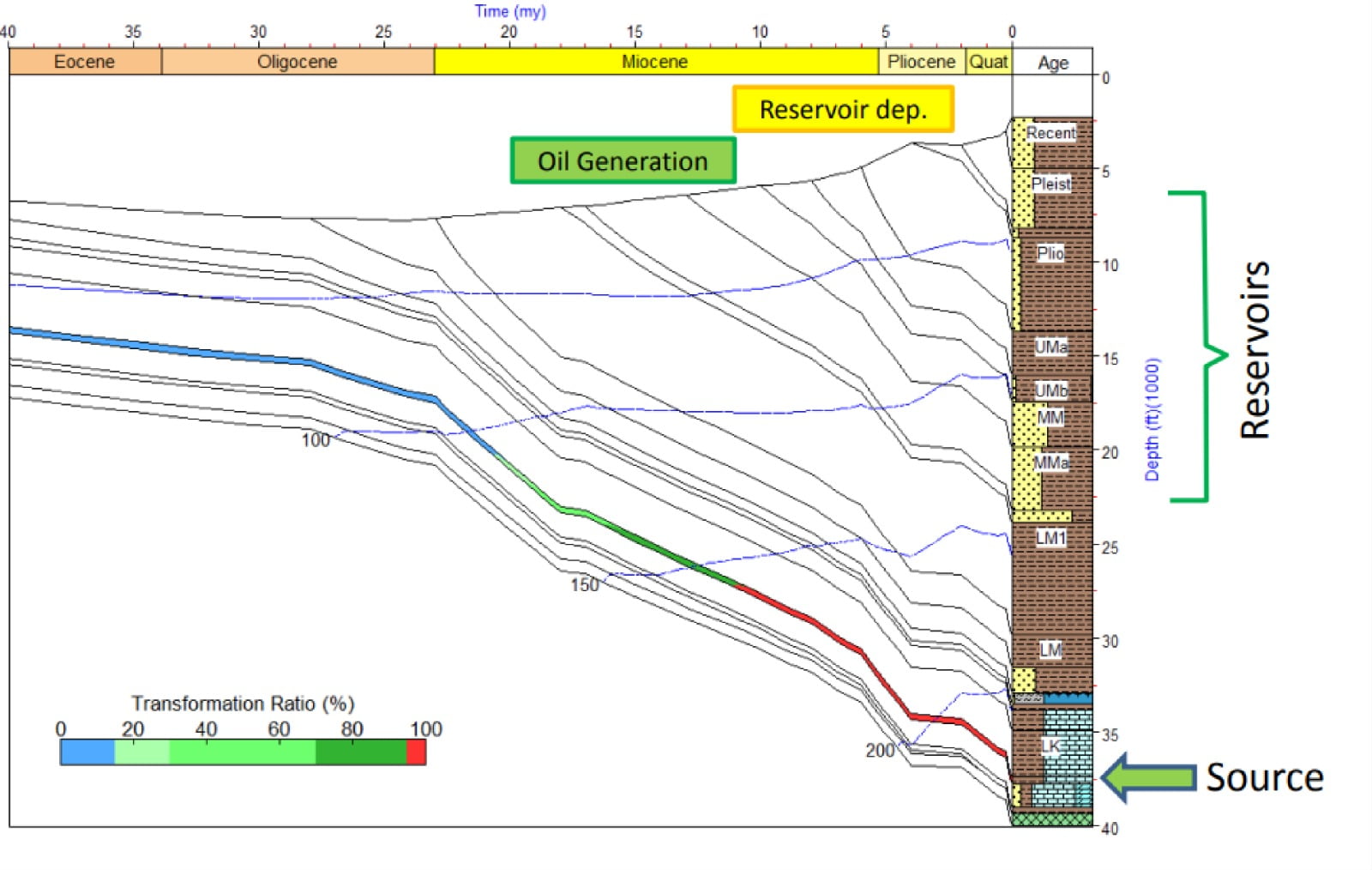Rethinking Timing in Petroleum System Analysis: The Role of Migration Lag
Understanding petroleum systems is critical for oil and gas professionals. A common industry assumption holds that the timing of reservoir deposition relative to source rock maturity is crucial. This view suggests reservoirs deposited after oil generation might be barren or gas-prone.
Recent research by Zhiyong He (“Migration Lag – What is it and how it affects Charge Risk and Fluid Properties”) challenges this assumption. He demonstrates that the time between hydrocarbon generation and initial migration (“migration lag”) depends on generation rate and the volume needed to fill the source rock. This lag can represent 10-20% of the hydrocarbon generation window, or even longer for source rocks with reservoir-like properties.
The accompanying diagram (adapted from a Zhiyong He presentation) depicts a typical deep-water Gulf of Mexico burial history, highlighting source rock maturity. The Tithonian source rock entered the oil window 10-20 million years ago. However, the primary reservoirs in this region are middle Miocene, with some as young as Pleistocene. Notably, only in the last 5 million years have Miocene and Pliocene reservoirs begun filling with low-maturity oil. This occurs while the source rock generates gas, flushing out the oil in the initial carrier bed.

Furthermore, He cites the Bohai region as another example. Here, the source rock is currently within the gas window, having entered it 10-20 million years ago. Despite this, the main reservoirs in the region hold mostly low-maturity oil.

Conclusion: These findings suggest that timing may not be as critical a factor in exploration risk assessment as previously believed.
Reference
Migration Lag – What is it and how it affects Charge Risk and Fluid Properties*
Zhiyong He1
Search and Discovery Article #42014 (2017)
https://cva-academy.com/petroleum-systems-analysis-and-modeling.html

